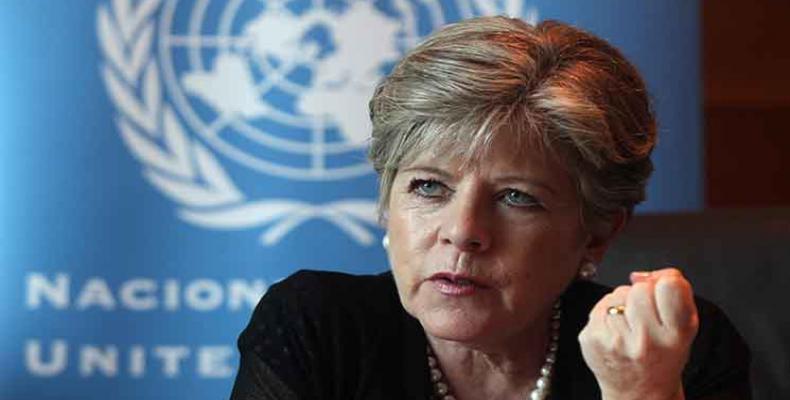Mexico City, May 22 (RHC)-- The United Nations Economic Commission for Latin America and the Caribbean (ECLAC) presented in Mexico City a Comprehensive Development Plan for El Salvador, Guatemala, Honduras and Mexico.
Dubbed the Central American “Marshall Plan,” the execution of the initiative will require an approximate investment of $10 billion U$D a year over the next decade -- from 2020 to 2030 -- based on “the right to development in the place of origin as the solution so migration becomes an option and not an obligation,” according to Executive Secretary of the U.N. regional commission, Alicia Barcena.
The ceremony was led by Mexican President Andres Manuel Lopez Obrador, who is the main proponent of this strategy, with the purpose to reduce migration in the region by raising standards of living and improvement socio-economic indicators in Central America. It’s also Mexico’s bid to intermediate between the Donald Trump administration and Central America in order to regain leadership in the region since leading peacemaking processes in the 1990s.
"People migrate out of necessity, due to lack of work opportunities or violence and we must address those causes. We must go to the origin of what is causing this migratory phenomenon," Lopez Obrador emphasized. He said that "now is the time to convince the United States to make this project a reality."
Back in December 2018, the U.S. government pledged $5.8 billion in aid and investment for strengthening government and economic development in Central America, and another $4.8 billion in development aid for southern Mexico.
The Executive Secretary of the U.N. explained that five structural causes of migration have been identified: lack of employment and economic opportunities, low income, violence and insecurity, family problems and the desire of disintegrated families to reunite with their relatives who migrated before.
Barcena noted that the region is one of the most violent in the world, with great inequality, as the population with more income in the region earns up to 70 times more than the poorest strata. A number of countries show high demographic growth -- El Salvador, Guatemala and Honduras -- adding up to 33 million people. Yet its young people can’t integrate into the labor force, as 362,000 are incorporated each year but only 127,000 jobs are created in general.
For this reason, the program includes 30 public policy recommendations framed in four programmatic areas: migration, economy and trade, social programs and sustainable development. During the presentation, Barcena asked the four countries to increase investment, both public and private, to the point of representing 25 percent of gross domestic product (GDP).
The proposal includes mega-infrastructure projects such as an electric plant in Honduras and electricity network improvements in the whole region with an estimated cost of $1.5 billion. An extension of the highway network on the Mexican-Guatemalan border, and a 940 km gas pipeline between Honduras and the Gulf of Mexico.


